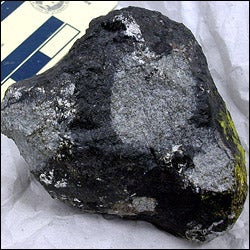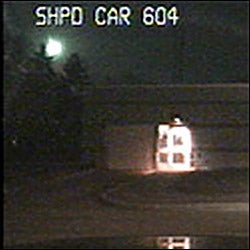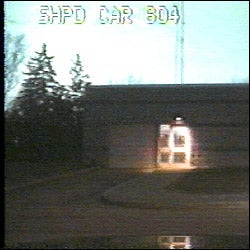A little over a year ago, on March 27, 2003, a spectacular fireball lit up northern Illinois and sent chunks of space rock crashing into the streets and roofs of a quiet Chicago suburb of Park Forest. Incredibly, the kamikaze dive of this extraterrestrial visitor was caught – completely by accident – on police car and security video cameras, providing scientists an amazing opportunity to study in detail the last fiery moments of a meteor’s life.
The Park Forest fireball represents the largest bolide to streak across a densely populated area in modern history. “With only two such events occurring on land anytime during a year around the world, this was unique by all standards,” says Wayne Edwards, study team member and Ph.D. candidate from the University of Western Ontario. Many different visual and acoustic instruments around the region observed the object’s descent. Astronomers have used these measurements to determine the Park Forest meteorite’s pre-fall orbit. This is only the eighth time astronomers have been able to calculate a reliable orbit for a meteorite.
Audible detonations occurred as the meteor punched through the atmosphere and broke into smaller fragments. Analysis of audio and seismic recordings clearly matched three distinctly visible fragmentation events. The main fragmentation event, visible on a police-car video, occurred at a height of 44 miles (70 km) and was quickly followed by two smaller detonations at 22 and 16 miles (36 and 26 km). “Incredibly, we can trace the meteor in the video back to the very earliest time in its entry into our atmosphere,” says Edwards.
With enough data from different meteor falls, a clearer picture may emerge as to the sources of these meteorites and what type of asteroid they come from. “With enough orbits and enough samples from the ground, we can start to determine what the distribution of this material is in the solar system,” explains Edwards. Going beyond Park Forest, the Ontario team plans to establish a system of cameras specifically designed to catch fireballs and determine their orbits.
The team presented its findings at the 2004 Joint Assembly of the American and Canadian Geophysical Union in Montreal, Canada, last week.












